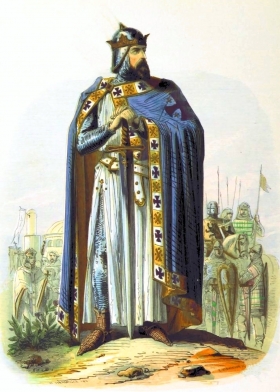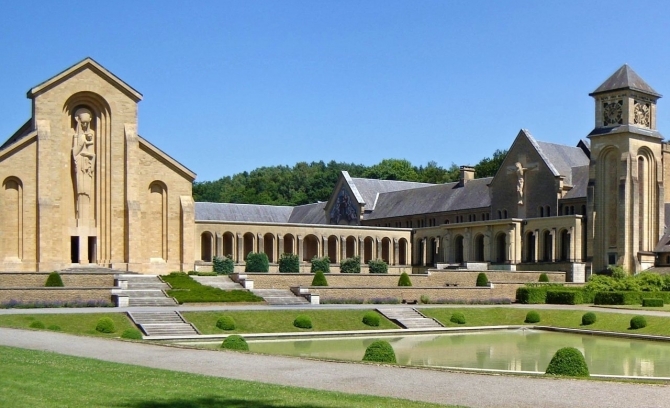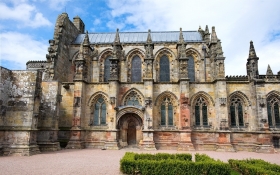- Home
- Expulsions and impostures
- PHOTO GALLERY
- Commanderies and Chapters
- Myth or reality?
- Templar Knights
- The Grand Master
- Rituals
- Regalia
- The Sword in the Rock
- A primitive christianity
- The gnostic key
- The alchemical secret
- Jesus and the Grail
- Who we are
- Introduction to the Website
- A noble Order of Chivalry
- Story of the Priory of Sion
- Genealogy of Jesus and Mary
- The Merovingians
- The heirs of the Royal Blood
- Pierre Plantard de Saint-Clair
- Eggregore
- Priory of Sion - Illuminati
- Rhedae - Rennes Le Château
- Church of Rennes le Château
- The Rosicrucians
- Meditation
- "Magical" thinking
- Priory of Sion and Freemasonry
- Egyptian Freemasonry
- Sang Real
- Earthly Life
- The biological machine
- Role of Man
- Spirituality
- Spiritual awareness
- Destiny
- Biological "Reincarnation"
- "Cercle Sigebert IV"
- Admissions and Initiations
- Initiatic Degrees of the Order
- Video
- Prayer to the Father Creator
- Universal Brotherhood
- International Treaties
- Gazette de Rennes-le-Château
- Statute
- Internal Regulation
- Organization Chart
- Tribe 13
- Journal
- Links
- Recommended readings
Priory of Sion
Ordre de la Rose-Croix Véritas O.D.L.R.C.V.
Myth or reality?
Myth or reality?

The contemporary literature that deals with the Priory of Sion, very often sets itself the task of investigating whether it is myth or reality and so often we find researches presented through books, websites or magazines where elements of various nature are elaborated in support of one possibility rather than another.
If on one hand this recent habit that involves the world of media and literature can contribute in some way to the charm and mystery, at the same time it is possible to understand that all these efforts, have an absolutely relative value, first of all, because as we know the true inheritance and the deposit of every initiatory Order is in the value of its Ritual, therefore in the symbolic and operative system through which it transmits its knowledge, secondly, for a simple fact in human history, nothing that is considered and commonly accepted as "real" has in fact never been such before it was invented.
Thus were born governments, cities, nations, kingdoms, thanks to someone who one day stood up and spoke, proposing something that the moment before was only in his own imagination. This could be a new law, the name of a city or anything else. What matters is that this thing conceived individually has been expressed and consequently recognized as something valid and good and for this reason it has begun to be a priority for many, who by combining their forces on the so-called "real" level, have it made a reality.
This leads us diagonally to deduce that, fundamentally, there are two approaches of man towards the so-called "reality", a more conventional one which is limited to verifying between the elements available the existence or not of a given object and a less conventional one, that is not limited to passively enduring the living environment, but rather is preparing to freely imagine new creations to enrich humanity and does so without inhibitions or filters, retaining as the only limit and in spite of itself, only the boundaries of one's imagination. It is precisely in this case that man, abandons a passive state towards the Universe to adopt the creative one and thus assuming the role of creator rather than spectator.
Isn't this approach consistent with some of the higher goals of Initiation? So to realize their full potential so as to be able to pro-actively influence the world around us? A shining example of this is the second Grade of the Craft, which is in fact the most important Degree in it, since it is in the Degree of Companion that it is possible to obtain the assimilation of the Light and then in the third Degree, as Master, the ability to spread it.
The Priory of Sion is an Initiatic Order which, because of its highly esoteric and symbolic nature, combined with the fact that it has been a secret and clandestine society since the 1600s until the recent history, has made it even more prominent and important, the correct perception of its symbolic and allegorical aspects to be understood, which were the only elements through which the Order communicated with the outside world, and only to predetermined recipients, able to decipher our signs, symbols and allegories.
Essentially, the Priory of Sion is a coherent initiatory system, composed of interdependent symbols and allegories, which does not need to be “real”, to be true.
Our mysteries, lie within allegories and symbols, which correspondence with the clumsily called "real" plan is not therefore an essential prerogative, such as the legend of the Quinotaur, joining the King's Chlodion wife, Meroveo conceives. It is clear that what matters is what is concealed in this particular allegory, that is to say that Merovingians has received a deposit of knowledge that has non-human origins; therefore, even though we believe in the existence of other forms of life and intelligence, we do not consider central the existence of the Quinotaur in itself, in that particular situation, but rather consider the importance of the representation, through this allegory, of the transmission through the Merovingians of this initiatic deposit of knowledge.
The set of symbolic, allegorical and ritual elements, combined with esoteric and theological knowledge, make it an extremely sophisticated and coherent initiatory system that does not need anything else to be effective and fulfill its function.
At the same time, not just for the Initiated but also for the researcher and the attentive scholar, it will be possible to understand that the initiatic deposit is actually much ancient than 1099, while still recovering elements that could be located at that time.
In relation to these particular elements and according to our oral tradition, we wanted to place the date of birth of the Order in 1099, on the occasion of the founding by the Duke of merovingian descendance, Godfrey of Bouillon, at the Abbey of "Our Lady of Mount Sion ", as" Order of Our Lady of Mount Sion", because it was in that occasion that the Order acquired even a chivalric connotation.
The Traditional nature of the Order
Without a specific preparation about Knight Orders and their history, it is difficult to know or imagine the relationship between a Knightly Order and a Monastic Order, which is, in most cases, except this and a few others, inexistent; we are taliking about religious- chivalric or religious-military Orders like the Templars, and were created at the time of the Crusades, in which the members was required vow to fight in war together with the respect of the monastic traditional vows, as poverty's, chastity's and obedience.
In this particular, these orders differed drastically from any other religious Order of Christian matrix, as they did not observe the prohibition that prevented the Knights from taking the sacred vows, then to a monk to shed others' blood, since within these Orders, members could at the same time be monks and Knights.
For this reason, the monks then landed in France under the protection of Louis VII, being some of them Knights, so warrior monks, were in possess of the requisites and qualifications, along with their vows, to carry with them the transmission of Knightly Initiation, and this is what, according to our oral tradition, has come to our day.
Other monks, some of them originary of the Calabria region in Italy, whose also came from the Abbey of "Our Lady of Mount Sion" and whose accompanied Godfrey of Bouillon to the Holy Land, came back together with the Duke in France and settled at the Orval Abbey.

The connection with the Plantards and the Saint Clairs

The controversy arising from the dispute concerning the lack of technical requirements regarding the noble title of the past Grand Master Pierre Plantard, although appearing from the outside as an inconsistency, in reality this proves nothing other than the essential prerogative of the Priory of Sion it is not to be sought in historical vicissitudes, but rather in being a coherent initiatory system, composed of interdependent symbols and allegories, which does not need to be essentially real, to be true.
In this case, it is necessary to see what is the truth that wants to be expressed, through something that cannot be objectively considered as completely adherent to reality.
To do this, one has to start from the fact that Pierre Pantard, has Saint-Clair as last name, then Plantard de Saint-Clair, and this can also be obtained from personal documents, including the death certificate. In addition to this, it should be said that Plantard's surname is also a noble family's and that our tradition always tells us that the Plantard surname comes from a nickname given to Sigebert IV Plant-Ard "Rejeton" Ardent Prince - Ermite Comte de Rhédae, who in 681 inherited from his uncle the titles of Count di Rhédae and Duke of Razès.
With Sigebert IV° was originated the name Plantard from the "Plant-Ard" nickname, approached next to the name of the noble, which was precisely called Sigebert IV° "Plant-Ard"or "dit le Plantard"; this name, in reality concealed two hidden meanings, which refers to a "plant" (Plant) which has robust origins, understood as deep or distant, so, "Ard"; with deep can be an allusion to a profound knowledge with "deep roots", at the same time, the allusion may refer also to the antiquity of the roots understood as a family of ancient origin or referring to the antiquity of the repository of knowledge, or all those meanings together.
To conclude this bracket, it is good to point out that we believe in a certain continuity between the noble family Plantard, the Saint-Clair family, and Pierre Plantard de Saint-Clair, even if we admit that the actual requirements for Pierre Plantard de Saint-Clair to legally be considered noble, are uncertain with the present documentation, and although there are documents where Pierre Plantard de Saint-Clair is actually reported as "Comte de Saint-Clair and Comte de Rhédae", we admit that they are not sufficient to prove that he has been in possession of the actual legal requirements.
It is also appropriate to remember that in modern times this is part of the "trademark" and the charm of the Priory of Sion: an important right that exists in spite of the rule.
This is explained by the fact that this is an esoteric field, where value lies in the initiatory deposit and knowledge, things that have no relation to the technicalities of noble law.
Pierre Plantard has sought several times to clarify this difference as to the type of legitimacy he claims, but has continued to be misunderstood by many to this day.
Returning to Saint Clair, they were originally a noble French family, and their name derives from Sancto Claro, the name of a place in the French Normandy Duchy of which they originate; later moved to Scotland, the family name, from Saint-Clair, will become Sinclair, since the end of the 16th century, then a branch of the Sinclair Clan, were exactly the Sinclair of Roslin, the baronate where was erected the famous Chapel of Rosslyn, which is notoriously symbolic of Templar and Masonic influence, traditions deeply linked to the history and the initiatory deposit of the Priory of Sion.
Our oral tradition connects the Saint-Clair lineage to the Merovingian Dynasty, which we consider to be the holders of the primordial tradition that has come to us from Babylon and again from Atlantis, through them, in addition of being the dynasty that actually gave origin to the France, ferrying it out of the barbarian age.
The Merovingians are linked to the Priory of Sion, since it is their ancestral tradition that the Order inherited, and Pierre Plantard de Saint-Clair, was also the heir of that initiatory deposit through their transmission, as well as being heir of his merovingian origins, though surely very diluted, through the Saint-Clair.
The intent of the past Grand Master of the Priory of Sion, Pierre Plantard de Saint-Clair, was therefore only to emphasize a myth with the aim of represent something true.
For all these reasons, we believe legitimate Pierre Plantard de Saint-Clair's nobility and initiatory legacy, as we think that besides being connected to merovingian ancestors, it was at the same time one among their descendants to have simultaneously inherited the Scepter of Sion.
The initiatory deposit of the Order, in the application through the personal path, is classified through the Degrees, but it is not limited to being a metaphysical, ecstatic or symbolic esotericism, even if it encompasses all these phases, but aims to be a form of operational esotericism.